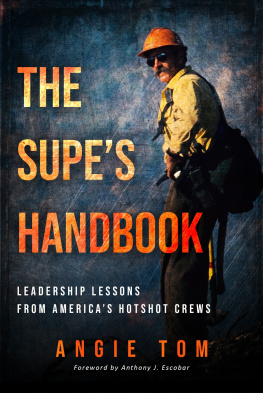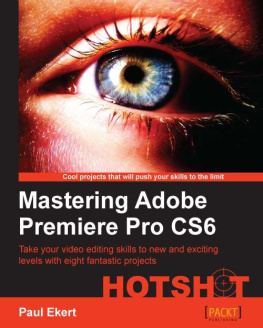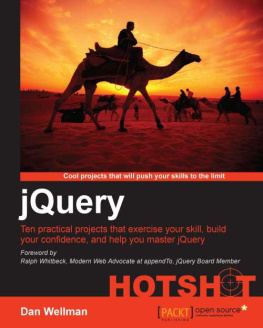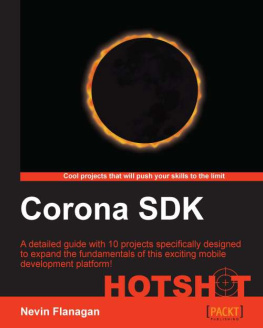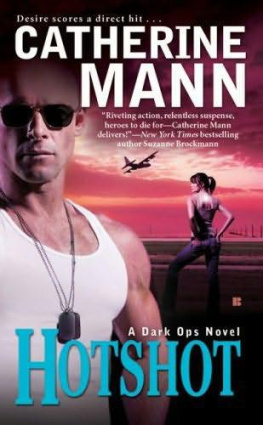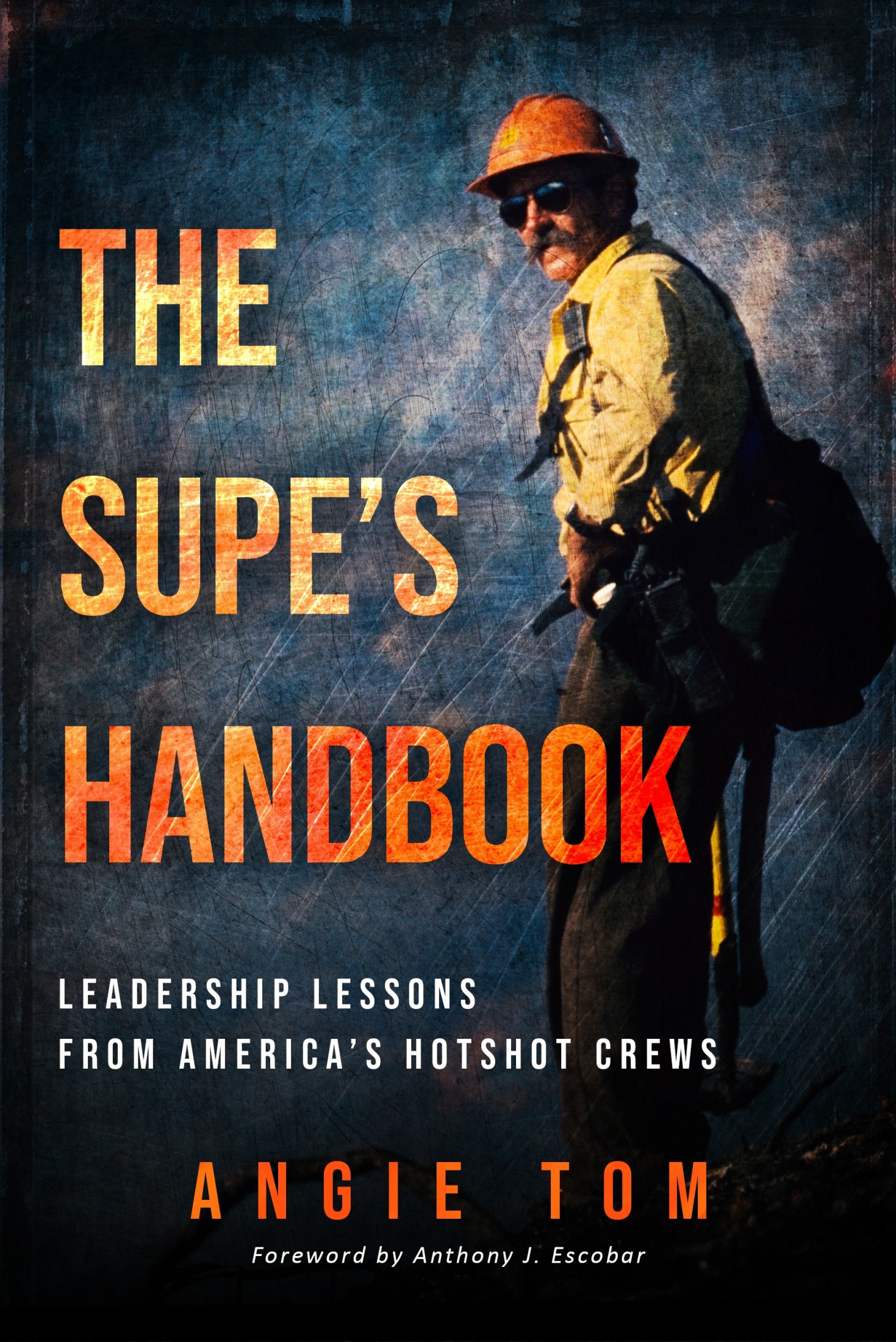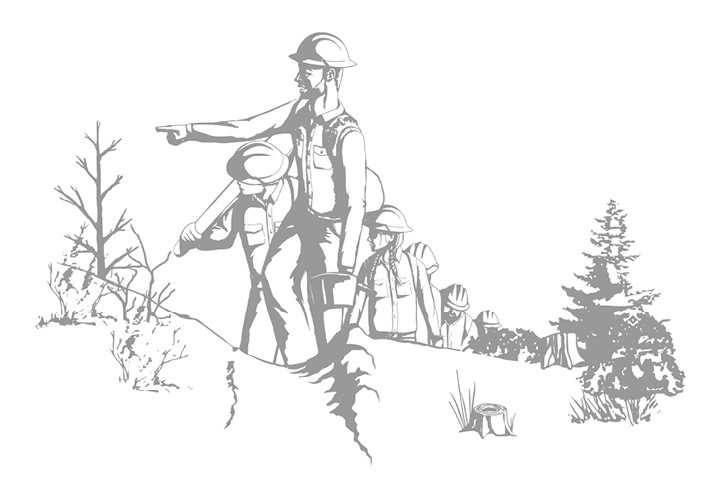The Supes Handbook
The Supes Handbook
Leadership Lessons
from Americas
Hotshot Crews
Angie Tom

Desert Rat Press, Twin Falls, Idaho
2021 Angie Tom
All rights reserved. No part of this book may be used or reproduced in any manner whatsoever without written permission, except in the case of brief quotations in critical articles and reviews. For more information, contact Desert Rat Press, PO Box 5051, Twin Falls, ID 83301; .
Published 2021
Printed and bound in the United States of America
ISBN-13: 978-1-7356991-0-3 (trade paperback)
ISBN-13: 978-1-7356991-1-0 (e-book)
Although the publisher and the author have made every effort to ensure that the information in this book was correct at press time and while this publication is designed to provide accurate information in regard to the subject matter covered, the publisher and the author assume no responsibility for errors, inaccuracies, omissions, or any other inconsistencies herein and hereby disclaim any liability to any party for any loss, damage, or disruption caused by errors or omissions, whether such errors or omissions result from negligence, accident, or any other cause.
Cover design: Tanja Prokop, Book Design Templates
Editing: Christina Dubois Publishing Services
Book Design: Andrea Reider, Book Design Templates
Illustrations: Samantha Orient, DrawScience Media Solutions
Cover photo: Mike McMillan, Spotfire Images. (Los Padres superintendent Stan Stewart, Oak Hill fire, Vandenberg AFB/Los Padres NF, October 1994.)
Publishers Cataloging-in-Publication data
Names: Tom, Angie, author.
Title: The supes handbook : leadership lessons from Americas hotshot crews / Angie Tom.
Description: Includes bibliographical references and index. | Twin Falls, ID: Desert Rat Press, 2021.
Identifiers: LCCN: 2021902731 | ISBN: 978-1-7356991-0-3 | 978-1-7356991-1-0 (ebook)
Subjects: LCSH Wildfire fighters. | Wildfires. | Forest fire fighters. | Forest fires--Prevention and control. | Wildfires--Prevention and control. | Leadership. | BISAC Biography and Autobiography / Fire & Emergency Services | Technology & Engineering / Fire Science | Business & Economics / Leadership
Classification: LCC SD421.32.W47 .T66 2021 | DDC 634.9/618--dc23
In Memoriam
Ben Charley
Paul Gleason
Ken Jordan
Dave Matier
Stan Stewart
It takes some pretty twisted individuals to want to go out there. You spend $300 for a pair of boots to get you there, sweat your damned ass off in horrible friggin terrain, and then go out and physically torment yourself and put yourself at risk. I mean, thats an odd bunch of ducks out there on the side of those mountains. They all have that in common: they love it, even after what you put em through. My God, thats team building at its best. Wouldnt you agree? I mean, thats where its at.
J. W. Allendorf
CONTENTS
So You Want To Be A Hotshot?
Foreword
Experts in every profession operate at a higher level than the rest of us; their extensive experience and expertise are what set them apart. We are captivated by the ease with which they operate, the pace they sustain, and their adaptability to rapidly changing conditions; ultimately, it is their performance, and the results, that earn our respect. We observe these experts in action; we analyze their behaviors and marvel at the outcomes of their decisions. We try to emulate what they do, often to no avail. If we could just talk to them. We want what they have, whatever that may be. We want to know what they know; we want to be able to do what they dothe way they do it. We want the benefit of their expertise. We wish we could ask them questions and discuss the finer details of their own journey to expertise.
In The Supes Handbook: Leadership Lessons from Americas Hotshot Crews , Angie Tom gives us access to not just a single expert in the field of wildland fire but 35 of them. She shares with us her insightful seven-year journey of interviewing interagency hotshot crew (IHC) superintendents, each a leader of his or her own highly-skilled 20-person hotshot crew. There are several schools of thought when it comes to hotshots, hotshot crews, and specifically hotshot superintendents. Superintendents, whether you hate them, love them, hate to love them or love to hate them, your position is probably warranted. Some past experience(s), personal or otherwise, colors your viewpoint and little can be done to change it. Superintendents possess a high degree of confidence, and they know how to get things done. They have strong opinions and assertive personalities, and they can be blunt. Most superintendents can and will discuss, debate, and/or rigorously defend their positions, which can be off-putting at times. One cannot help but ask: what makes these assholes so damn special? In the case of these hotshot superintendents, it is their effective leadership in an environment few can fathom. Dont get me wrongnot all superintendents are great leaders and, likewise, not all of them are perfect assholes. Similar to most data sets, one can plot leadership effectiveness with a bell curve as well as by the degree of ones asshole-ness. Most of the interviewees in this book fall on the right half of the leadership curveone or two standard deviations above the meanand there are a few outliers.
By design and happenstance, hotshot superintendents are faced with a continuous stream of complex challenges in a highly dynamic environment. The inherent risks within the wildland fire environment provide them with countless opportunities to develop their fire expertise and hone their leadership skills. Much of what superintendents know and do is unspoken outside of their work environment, but that should not limit the applicability or marginalize the impact of what they have to offer you.
As a plank holder on an interagency hotshot crew, I can tell you there was not a superintendents handbook to be had anywhere, but I wish there had been. When I first became a superintendent, I relied upon those who came before me, those who would take my calls and answer my questionsand I had lots of questions. Good fortune, good friends, and fellow superintendents ensured that I would not fail. So, many years later, when I first heard of Angies project, it was either the stated intent or the working title that made me want to participate. By the time Angie got around to interviewing me for her project, she had already talked to more than 30 tenured superintendents. I had worked with most of them and respected them all. There was no question or hesitation on my part, as I had already received a few calls from previous interviewees, each endorsing the intent as well as the author. Angie established her initial credibility based on her performance as a member of the Prescott Hotshot Crew and, later on, the Payson Hotshot Crew. Credibility and respect at any level on a hotshot crew are not easily earned and can be short-lived if your commitment wanes.
With no obvious boundaries, Angies carefully-crafted questions become powerful tools, and her first-hand experience as a hotshot provides you with an insiders perspective. She asked these superintendents the questions any young firefighter would want to ask, given the access. Angie also uncovered several helpful nuggets of wisdom for those who aspire to be a superintendent themselves one day. Moreover, it may even provide a current superintendent with a different solution or perspective to some commonly faced challenges. What quickly becomes apparent is that there is no one way to develop your own fire and/or leadership expertise, nor is there a single path to becoming a superintendent. There are some commonalities in their backgrounds, their motivations, and their values, but there is no checklist or template to follow. A common priority among the best of them is a no compromise attitude when it comes to the safety and welfare of their crew, followed closely by a bias for action.

